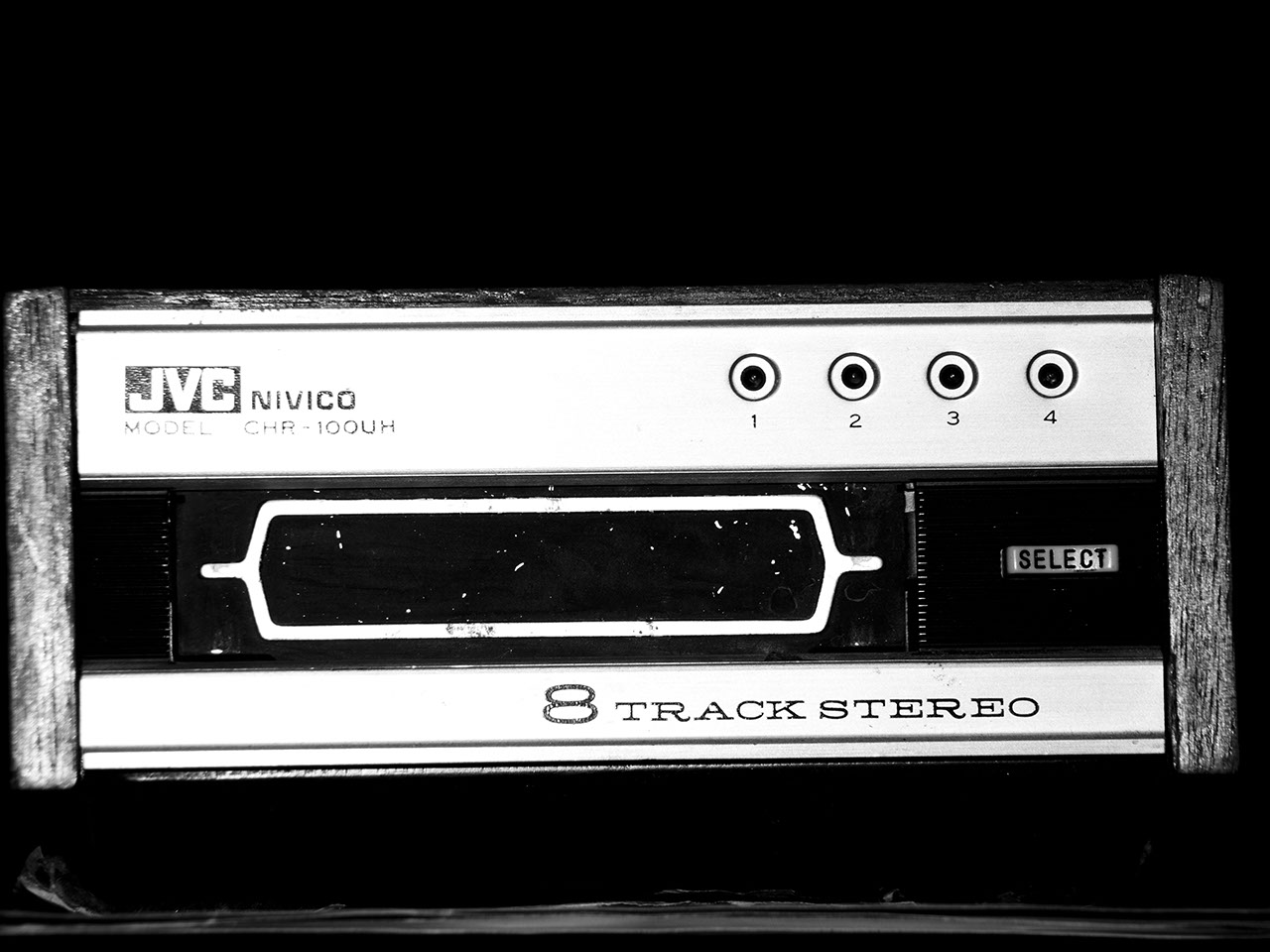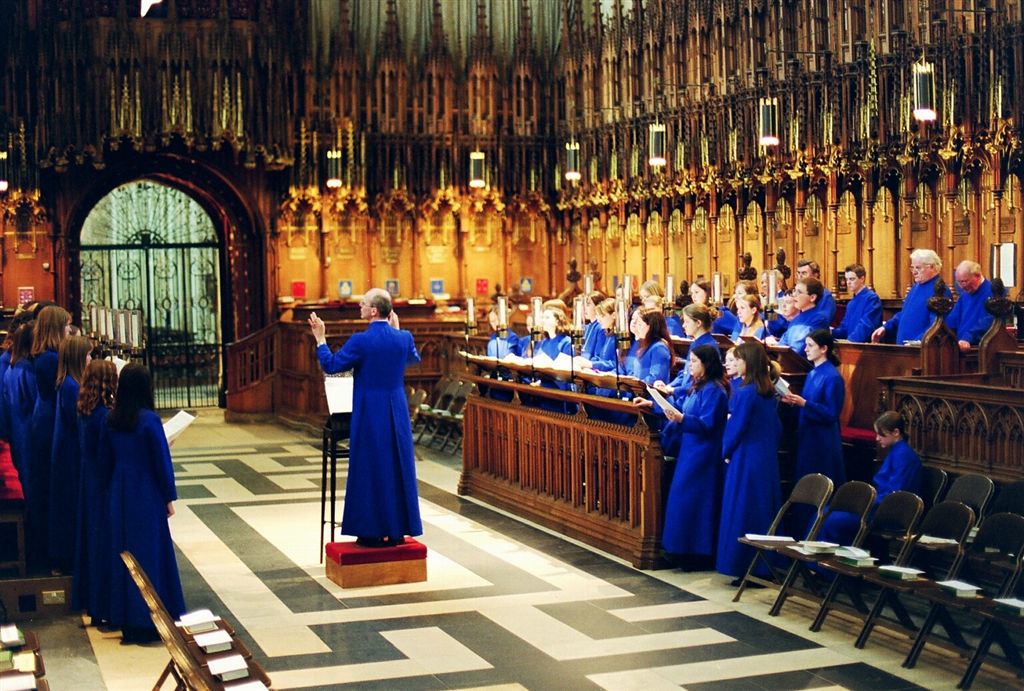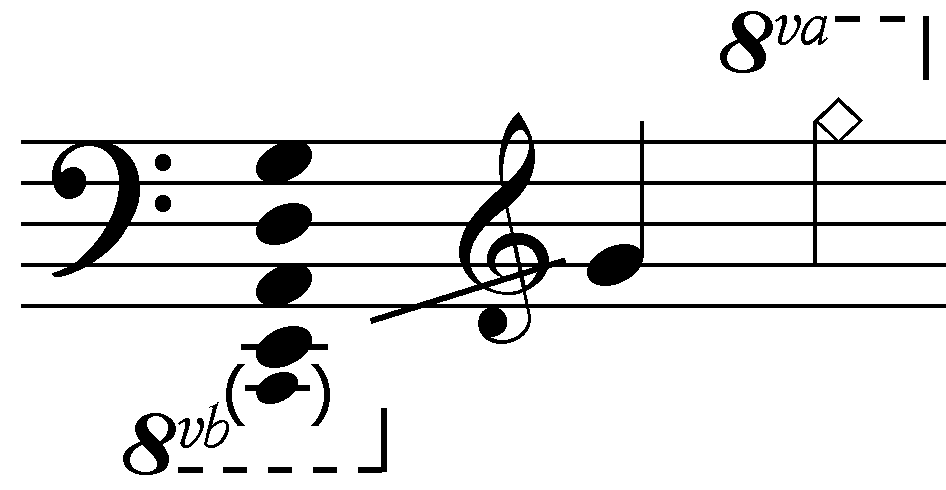|
Artistry In Voices And Brass
''Artistry in Voices and Brass'' is an album by the Stan Kenton Orchestra revisiting their popular compositions with new lyrics composed by Milt Raskin and arranged by Pete Rugolo for an 18-member vocal chorus and trombone section recorded in 1963 and released by Capitol Records.Vosbein, PStan Kenton Discographyaccessed June 9, 2016 Reception The Allmusic review by Lindsay Planer noted "the results are predictably mixed. ...This proves the old adages that sometimes newer ead: more modernisn't always better, and too many cooks do indeed spoil the proverbial sonic stew". Track listing All compositions by Stan Kenton and Milt Raskin except where noted. # "Flame" (Rugolo, Raskin) - 2:17 # "Moonlove" (Kenton, Rogolo, Raskin) - 4:26 # "Painted Rhythm" - 3:27 # "These Wonderful Things" - 3:30 # "Eager Beaver" - 2:25 # "Daydreams in the Night" - 2:32 # "Concerto (Of Love)" - 5:38 # "Solitaire" (Bill Russo, Kenton, Raskin) - 3:54 # "It's Love" - 3:15 # "Night Song" - 2:21 *Recorded at Ca ... [...More Info...] [...Related Items...] OR: [Wikipedia] [Google] [Baidu] |
Album
An album is a collection of audio recordings issued on compact disc (CD), Phonograph record, vinyl, audio tape, or another medium such as Digital distribution#Music, digital distribution. Albums of recorded sound were developed in the early 20th century as individual Phonograph record#78 rpm disc developments, 78 rpm records collected in a bound book resembling a photograph album; this format evolved after 1948 into single vinyl LP record, long-playing (LP) records played at revolutions per minute, rpm. The album was the dominant form of recorded music expression and consumption from the mid-1960s to the early 21st century, a period known as the album era. Vinyl LPs are still issued, though album sales in the 21st-century have mostly focused on CD and MP3 formats. The 8-track tape was the first tape format widely used alongside vinyl from 1965 until being phased out by 1983 and was gradually supplanted by the cassette tape during the 1970s and early 1980s; the populari ... [...More Info...] [...Related Items...] OR: [Wikipedia] [Google] [Baidu] |
Trombone
The trombone (german: Posaune, Italian, French: ''trombone'') is a musical instrument in the brass family. As with all brass instruments, sound is produced when the player's vibrating lips cause the air column inside the instrument to vibrate. Nearly all trombones use a telescoping slide mechanism to alter the pitch instead of the valves used by other brass instruments. The valve trombone is an exception, using three valves similar to those on a trumpet, and the superbone has valves and a slide. The word "trombone" derives from Italian ''tromba'' (trumpet) and ''-one'' (a suffix meaning "large"), so the name means "large trumpet". The trombone has a predominantly cylindrical bore like the trumpet, in contrast to the more conical brass instruments like the cornet, the euphonium, and the French horn. The most frequently encountered trombones are the tenor trombone and bass trombone. These are treated as non-transposing instruments, reading at concert pitch in bass cl ... [...More Info...] [...Related Items...] OR: [Wikipedia] [Google] [Baidu] |
Choir
A choir ( ; also known as a chorale or chorus) is a musical ensemble of singers. Choral music, in turn, is the music written specifically for such an ensemble to perform. Choirs may perform music from the classical music repertoire, which spans from the medieval era to the present, or popular music repertoire. Most choirs are led by a conductor, who leads the performances with arm, hand, and facial gestures. The term ''choir'' is very often applied to groups affiliated with a church (whether or not they actually occupy the quire), whereas a ''chorus'' performs in theatres or concert halls, but this distinction is not rigid. Choirs may sing without instruments, or accompanied by a piano, pipe organ, a small ensemble, or an orchestra. A choir can be a subset of an ensemble; thus one speaks of the "woodwind choir" of an orchestra, or different "choirs" of voices or instruments in a polychoral composition. In typical 18th century to 21st century oratorios and masses, 'ch ... [...More Info...] [...Related Items...] OR: [Wikipedia] [Google] [Baidu] |
Thurl Ravenscroft
Thurl Arthur Ravenscroft (; February 6, 1914May 22, 2005) was an American actor and bass singer. He was known as one of the booming voices behind Kellogg's Frosted Flakes animated spokesman Tony the Tiger for more than five decades. He was also the uncredited vocalist for the song " You're a Mean One, Mr. Grinch" from the classic Christmas television special, Dr. Seuss' ''How the Grinch Stole Christmas!'' Ravenscroft did some voice-over work and singing for Disney in both the films and the attractions at Disneyland (which were later featured at Walt Disney World). The best known of these attractions are Haunted Mansion as a singing bust, Country Bear Jamboree, Mark Twain Riverboat, Pirates of the Caribbean, Disneyland Railroad, and Walt Disney's Enchanted Tiki Room as "Fritz". His voice acting career began in 1940 and lasted until his death in 2005 at age 91. Early life and career Ravenscroft left his native Norfolk, Nebraska, in 1933 for California, where he studied ... [...More Info...] [...Related Items...] OR: [Wikipedia] [Google] [Baidu] |
Loulie Jean Norman
Loulie Jean Norman (March 12, 1913 - August 2, 2005) was a coloratura soprano who worked with arranger Gordon Jenkins. Jenkins and Norman collaborated on a number of albums. Norman was also a member of The Rhythmaires and the Ray Conniff Singers. Career Norman was born in Birmingham, Alabama. During her adolescence in Birmingham at Phillips High School, and later at Birmingham–Southern College, it became apparent that she was a gifted soprano with a four-octave range. Initially, she wanted to pursue opera, but she decided to move to New York to try for a career as a radio singer. Her beauty led to modeling jobs and, in 1936, she joined The Rhythm Singers on Kay Thompson’s Chesterfield Program. She married naval pilot Norman Price and eventually moved to Los Angeles where they raised four children. In 1940, Norman was selected as the summer replacement for Dinah Shore on the NBC radio program ''The Chamber Music Society of Lower Basin Street.'' Norman became a member of the su ... [...More Info...] [...Related Items...] OR: [Wikipedia] [Google] [Baidu] |
Percussion
A percussion instrument is a musical instrument that is sounded by being struck or scraped by a beater including attached or enclosed beaters or rattles struck, scraped or rubbed by hand or struck against another similar instrument. Excluding zoomusicological instruments and the human voice, the percussion family is believed to include the oldest musical instruments.'' The Oxford Companion to Music'', 10th edition, p.775, In spite of being a very common term to designate instruments, and to relate them to their players, the percussionists, percussion is not a systematic classificatory category of instruments, as described by the scientific field of organology. It is shown below that percussion instruments may belong to the organological classes of ideophone, membranophone, aerophone and cordophone. The percussion section of an orchestra most commonly contains instruments such as the timpani, snare drum, bass drum, tambourine, belonging to the membranophones, ... [...More Info...] [...Related Items...] OR: [Wikipedia] [Google] [Baidu] |
Larry Bunker
Lawrence Benjamin Bunker (November 4, 1928 – March 8, 2005) was an American jazz drummer, vibraphonist, and percussionist. A member of the Bill Evans Trio in the mid-1960s, he also played timpani with the Los Angeles Philharmonic orchestra. Biography Born in Long Beach, California, Bunker was a central figure on the West Coast jazz scene, one of the relatively few who actually were from the region. In the 1950s and 1960s he appeared at Howard Rumsey's Lighthouse in Hermosa Beach, and performed with Shorty Rogers and His Giants and others. At first he played primarily drums, but increasingly he focused on vibraphone and was later highly regarded for his playing of timpani and various percussion instruments. A dependable and in-demand studio drummer and vibist, Bunker achieved particular distinction by recording with Billie Holiday, Ella Fitzgerald, Peggy Lee, Diana Krall, and many other jazz greats. In 1952, he was the drummer in one of Art Pepper's first groups. In 19 ... [...More Info...] [...Related Items...] OR: [Wikipedia] [Google] [Baidu] |
Drum Kit
A drum kit (also called a drum set, trap set, or simply drums) is a collection of drums, cymbals, and other auxiliary percussion instruments set up to be played by one person. The player (drummer) typically holds a pair of matching drumsticks, one in each hand, and uses their feet to operate a foot-controlled hi-hat and bass drum pedal. A standard kit may contain: * A snare drum, mounted on a stand * A bass drum, played with a beater moved by a foot-operated pedal * One or more tom-toms, including rack toms and/or floor toms * One or more cymbals, including a ride cymbal and crash cymbal * Hi-hat cymbals, a pair of cymbals that can be manipulated by a foot-operated pedal The drum kit is a part of the standard rhythm section and is used in many types of popular and traditional music styles, ranging from rock and pop to blues and jazz. __TOC__ History Early development Before the development of the drum set, drums and cymbals used in military and orchestral mu ... [...More Info...] [...Related Items...] OR: [Wikipedia] [Google] [Baidu] |
Dee Barton
Dewells "Dee" Barton Jr. (September 18, 1937 — December 3, 2001) was an American jazz trombonist, big band drummer, and prolific composer for big band and motion pictures. He is best known for his association with the Stan Kenton Orchestra. Life Early years Dee Barton was born in Houston, Mississippi in 1937. The family moved to Starkville, Mississippi in 1941. His father became the band director at Starkville High School. "My dad brought home an old E flat mellophone and at the age of three I figured out the fingerings on it," said Barton. Barton later took up the trombone. He practiced in the school band room for 10 hours a day, and was able to help when his father was ill. Barton was able to take over his father's work and teach all of his classes for two years to keep the Starkville High School job running.Voce, Steve. The Independent. Dee Barton, obit. Saturday 22 December 2001 01:00Cuscuna, Michael. The Jazz Compositions of Dee Barton. CD Liner noters. 2007 Bar ... [...More Info...] [...Related Items...] OR: [Wikipedia] [Google] [Baidu] |
Double Bass
The double bass (), also known simply as the bass () (or #Terminology, by other names), is the largest and lowest-pitched Bow (music), bowed (or plucked) string instrument in the modern orchestra, symphony orchestra (excluding unorthodox additions such as the octobass). Similar in structure to the cello, it has four, although occasionally five, strings. The bass is a standard member of the orchestra's string section, along with violins, viola, and cello, ''The Orchestra: A User's Manual'' , Andrew Hugill with the Philharmonia Orchestra as well as the concert band, and is featured in Double bass concerto, concertos, solo, and chamber music in European classical music, Western classical music.Alfred Planyavsky [...More Info...] [...Related Items...] OR: [Wikipedia] [Google] [Baidu] |
Don Bagley
Donald Neff Bagley (July 18, 1927 – July 26, 2012) was an American jazz bassist. Career Bagley was born on July 18, 1927 in Salt Lake City, Utah. He received formal training on the double bass. He studied in Los Angeles and played in 1945 with Shorty Sherock and Wingy Manone, and in 1948 with Dick Pierce. From 1950 to 1953, and sporadically thereafter, Bagley played with Stan Kenton; during Bagley's time with Kenton, "A Study for Bass" by Bill Russo and "Bags" by Bill Holman were written to feature Bagley's playing. Beginning in 1954, he fronted his own ensembles. Between 1950 and 1952, he worked extensively as a session musician with Nat King Cole, Maynard Ferguson, and Dexter Gordon. In the middle of the 1950s, he played in Europe with Zoot Sims, Lars Gullin, Frank Rosolino, and Åke Persson. Between 1956 and 1967, he again worked with Kenton and with Les Brown; toward the end of the 1950s, he also played with Jimmie Rowles, Shelly Manne, and Phil Woods. In 1957 and ... [...More Info...] [...Related Items...] OR: [Wikipedia] [Google] [Baidu] |
Guitar
The guitar is a fretted musical instrument that typically has six strings. It is usually held flat against the player's body and played by strumming or plucking the strings with the dominant hand, while simultaneously pressing selected strings against frets with the fingers of the opposite hand. A plectrum or individual finger picks may also be used to strike the strings. The sound of the guitar is projected either acoustically, by means of a resonant chamber on the instrument, or amplified by an electronic pickup and an amplifier. The guitar is classified as a chordophone – meaning the sound is produced by a vibrating string stretched between two fixed points. Historically, a guitar was constructed from wood with its strings made of catgut. Steel guitar strings were introduced near the end of the nineteenth century in the United States; nylon strings came in the 1940s. The guitar's ancestors include the gittern, the vihuela, the four-course Renaissance guitar, an ... [...More Info...] [...Related Items...] OR: [Wikipedia] [Google] [Baidu] |



